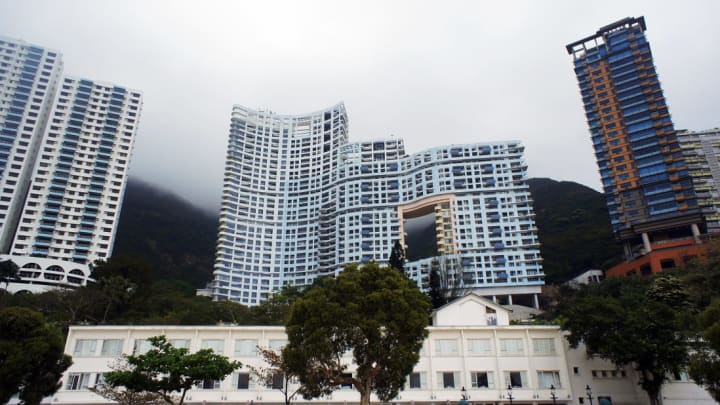Most people are familiar with feng shui—the ancient Chinese art of arranging one's environment to maximize good energy—as it applies to interior design. But you don't need to walk into a building to see feng shui at work in Hong Kong: It's baked into the skyline.
This video from Vox examines how feng shui has shaped the design of Hong Kong's skyscrapers. Some of the most extreme examples are dragon gates: large holes cut out of the center of buildings. The idea is that dragons, which are said to live in the mountains behind the city, will be able to fly through the openings and into the water. If their passage is blocked, bad luck will befall any buildings in their way.
Some superstitious design features are a little more subtle. In the lobby of the HSBC building, the escalators are positioned at a strange angle to fend off the bad energy flowing into the space. When Hong Kong Disneyland hired a feng shui consultant (a real and lucrative job), they were told to shift the entrance 12 degrees to keep chi from flowing out.
But not every architect in Hong Kong takes feng shui into account. The Bank of China Tower is infamous for its sharp angles, which feng shui experts claim damages the positive energy around it. Anything bad that happens to the surrounding businesses is immediately blamed on the tower, and the neighboring HSBC building even installed cranes that are meant to combat any bad luck it radiates.
You can watch the full story below.
[h/t Vox]
